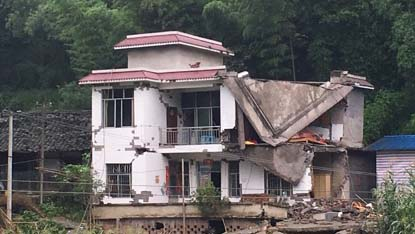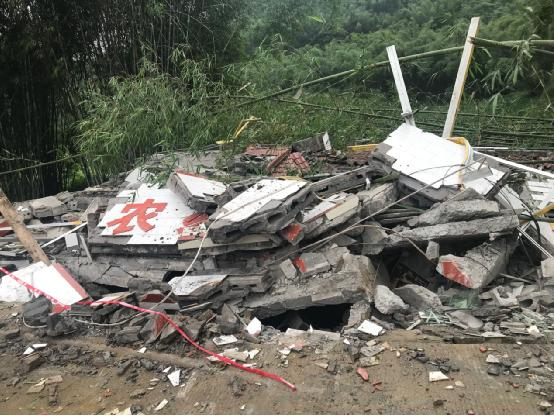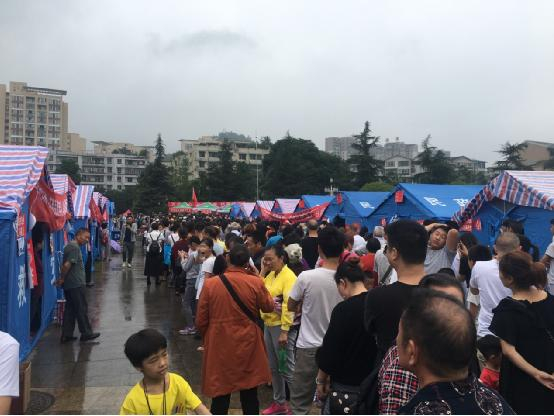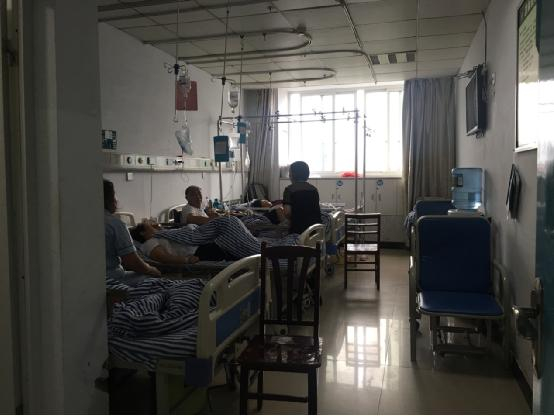

At 10:55 p.m., on June 17, 2019, a magnitude 6.0 earthquake struck Changning County in southwest China's Sichuan Province. Five days later, on June 22, a magnitude 5.4 quake jolted neighboring Gongxian County. As of 4:00 p.m. on June 28, 195 aftershocks had been recorded in the region with magnitudes at or greater than 2.0.
Yi Guixi, a research professor at Sichuan Earthquake Prediction Research Center, told CGTN that the quake in Changning, and the ensuing aftershocks, came as a result of the deadly magnitude 7.9 Wenchuan Earthquake, which struck many parts of China on May 12, 2008, killing over 87,000 and leaving more than 18,000 still missing.
Changning Earthquake: Biggest tremor in the Sichuan Basin
Yi started research on earthquake prediction back in 1987 and was actively involved in evaluating the aftermath of the Wenchuan Earthquake. According to her, the Wenchuan Earthquake exerted a stress-loading effect on the entire Sichuan Basin, which added a force to the region. This resulted in a significant rise in seismic activity, including the Suining Earthquake in 2010 which had a magnitude of 5.0, the 4.7 quakes that occurred in Santai in 2013, where quakes were rare, as well as the 4.9 and 4.6 ones that occurred in Zitong and Santai successively in 2014.

This four-story building was leveled off by the magnitude 5.4 quake in Gongxian County on June 22, 2019. The place, located right in the epicenter, used to be a family hotel and restaurant. /CGTN Photo
Yi believes this shows that seismic activities have become relatively high in the Sichuan Basin since the Wenchuan Earthquake. However, throughout history, the tectonic activities were relatively weak, as earthquakes in the region are mainly controlled by folds and associated small-scale faults. And in fact, this was the very first time for the Sichuan Basin to have a magnitude 6.0 or higher quake in recorded history.
Quakes affect more than 155,000 local residents in Sichuan
As of 2:00 p.m., June 27, the quakes had affected over 155,000 local residents, killing four people and injuring 128. The tremor had also damaged more than 32,000 houses as a result.
Yi shared with CGTN that, given the relatively low magnitude and long recurrence intervals of damaging shocks in history, residential buildings in the region lack earthquake resistance capabilities, and people do not realize that their houses need to guard against risks. Besides, most of the buildings that have been severely damaged during recent quakes were built decades ago.
"China Earthquake Administration has published a new version of seismic intensity maps. So long as we build houses in strict accordance with the new standards, we can improve the shock resistance of those buildings," she added.

Following an earthquake, residents of Gongxian County queue up for free lunch while seeking shelter in a camp that holds 3,000 people, June 17, 2019. /CGTN Photo
Experts in China work on national early warning system
Earthquake early warning systems are operational in several countries around the world, including Mexico, Japan and Turkey. In China, only some cities like Chengdu, capital city of Sichuan Province, are equipped with the system, but experts are now working on a solution to cover the whole country.
Sixty-one seconds before the Changning Earthquake occurred, residents of Chengdu were alerted to the tremor by a countdown from loudspeakers in local communities. Some also saw messages that popped up on TV screens, which included the magnitude of the quake and its arrival time.
The system, developed by the Institute of Care-Life, is similar to those already commonly used in seismically active countries like Japan and Mexico.
When an earthquake occurs, two types of waves shoot out from the epicenter: the faster but mild P-waves, and the slower but stronger and more damaging S-waves. P-waves are the first to reach the sensors deployed across the landscape, therefore people can have some time to react before the S-waves arrive.

Inside Gongxian People's Hospital, those injured by the recent spate of earthquakes receive medical treatment. Local departments set up special units to help them recover. Most of them suffered from bone fractures after trying to escape from quakes. /CGTN Photo
Yi told CGTN that it's difficult to predict the occurrence of earthquakes. She thinks progress has been very slow so far, but she hopes to make more progress in the near future and to be able to do short-term forecasting. To that end, Yi Guixi expects to minimize casualties and property damage.
China has a four-level earthquake emergency response system, with level-I being the top.
Following the magnitude 6.0 earthquake in Changning County, the Sichuan government activated level-II emergency response procedures.
Work teams were sent to the stricken area to carry out emergency operations.
After about 10 days of intensive search and rescue, the emergency response was deactivated at noon on June 27.
Reconstruction work is now underway and is expected to finish by late January 2020, ahead of the Chinese New Year.

Copyright © 2018 CGTN. Beijing ICP prepared NO.16065310-3
Copyright © 2018 CGTN. Beijing ICP prepared NO.16065310-3